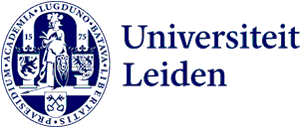Admission requirements
Core course in MSc Life Science and Technology - biomedical sciences, elective course in MSc Chemistry.
The course is aimed at students with a BSc in LST, MST, BFW, Biology or equivalent. Prior knowledge on basic aspects of transcription and translation, DNA, RNA and protein structure is required.
Description
This course offers an in-depth exploration of advanced gene regulation, encompassing both prokaryotic and eukaryotic systems. Beyond fundamental concepts, topics of the lectures include epigenetic regulation (DNA methylation, histone modifications, chromatin remodeling), non-coding RNAs (e.g. miRNAs, lncRNAs) and their roles in gene silencing and activation, and the complex interplay of transcription factors and enhancers in developmental processes and disease. Also covered are the diverse strategies employed for translational regulation in all domains of life, including ribosome binding, RNA structure, and regulatory proteins. This course includes an understanding of experimental designs and applications of state-of-the-art technologies used to study gene regulation and chromatin structure (e.g., Chromosome Conformation Capture, Ribosomal profiling) and hands-on experience with relevant bioinformatics tools.
By the end of this course, students should possess a sophisticated understanding of the principles and complexities of advanced gene regulation and be equipped with the knowledge and analytical skills necessary to engage with current research.
Course objectives
At the end of this course the student is able to:
Explain in detail the molecular mechanisms underlying various levels of gene regulation, including transcriptional control (initiation, elongation, termination), post-transcriptional regulation (RNA processing, splicing, editing, stability, localization), translational control, and post-translational modifications influencing gene expression.
Reproduce the diverse cis-regulatory elements (enhancers, silencers, insulators, promoters, UTRs) and their interactions with trans-acting factors.
Understand the biogenesis, mechanisms of action, and regulatory roles of various non-coding RNAs (miRNAs, siRNAs, lncRNAs, circRNAs) in gene expression.
Understand how chromatin structure (histone modifications, nucleosome positioning, higher-order organization) dynamically influences gene accessibility and expression.
Know how extracellular signals are transduced intracellularly to modulate gene expression through various signaling pathways and transcription factor activation.
Understand experimental designs and applications of state-of-the-art technologies used to study gene regulation and chromatin structure (e.g., Chromosome Conformation Capture, ChIP-seq, Ribosomal profiling)
Compare and contrast gene regulatory mechanisms across different domains of life and in different biological contexts (e.g., development, disease).
Understand the crucial role of gene regulation in differentiation and adaptation of cells to environmental stimuli
Critically assess current research articles in the field of gene regulation
Obtain hands-on experience using relevant bioinformatics tools and databases
Timetable
Schedule information can be found on the website of the programmes.
In MyTimetable, you can find all course and programme schedules, allowing you to create your personal timetable. Activities for which you have enrolled via MyStudyMap will automatically appear in your timetable.
Additionally, you can easily link MyTimetable to a calendar app on your phone, and schedule changes will be automatically updated in your calendar. You can also choose to receive email notifications about schedule changes. You can enable notifications in Settings after logging in.
Questions? Watch the video, read the instructions, or contact the ISSC helpdesk.
Note: Joint Degree students from Leiden/Delft need to combine information from both the Leiden and Delft MyTimetables to see a complete schedule. This video explains how to do it.
Mode of instruction
The course consists of lectures and two hands-on practical sessions. As background the teachers will provide authoritative reviews and research articles.
Assessment method
Two written exams. The midterm and final exam each count 50% towards the final course grade.
Reading list
To be provided at the start of the course.
Registration
As a student, you are responsible for enrolling on time through MyStudyMap.
In this short video, you can see step-by-step how to enrol for courses in MyStudyMap.
Extensive information about the operation of MyStudyMap can be found here.
There are two enrolment periods per year:
Enrolment for the fall opens in July
Enrolment for the spring opens in December
See this page for more information about deadlines and enrolling for courses and exams.
Note:
It is mandatory to enrol for all activities of a course that you are going to follow.
Your enrolment is only complete when you submit your course planning in the ‘Ready for enrolment’ tab by clicking ‘Send’.
Not being enrolled for an exam/resit means that you are not allowed to participate in the exam/resit.
Contact
Prof. Dr. Remus Dame Dr. René Olsthoorn
Remarks
Assignment deadlines are communicated via Brightspace.
According to OER article 4.8, students are entitled to view their marked examination for a period of 30 days following the publication of the results of a written examination. Students should contact the lecturer to make an appointment for such an inspection session.
Software
Starting from the 2024/2025 academic year, the Faculty of Science will use the software distribution platform Academic Software. Through this platform, you can access the software needed for specific courses in your studies. For some software, your laptop must meet certain system requirements, which will be specified with the software. It is important to install the software before the start of the course. More information about the laptop requirements can be found on the student website.
